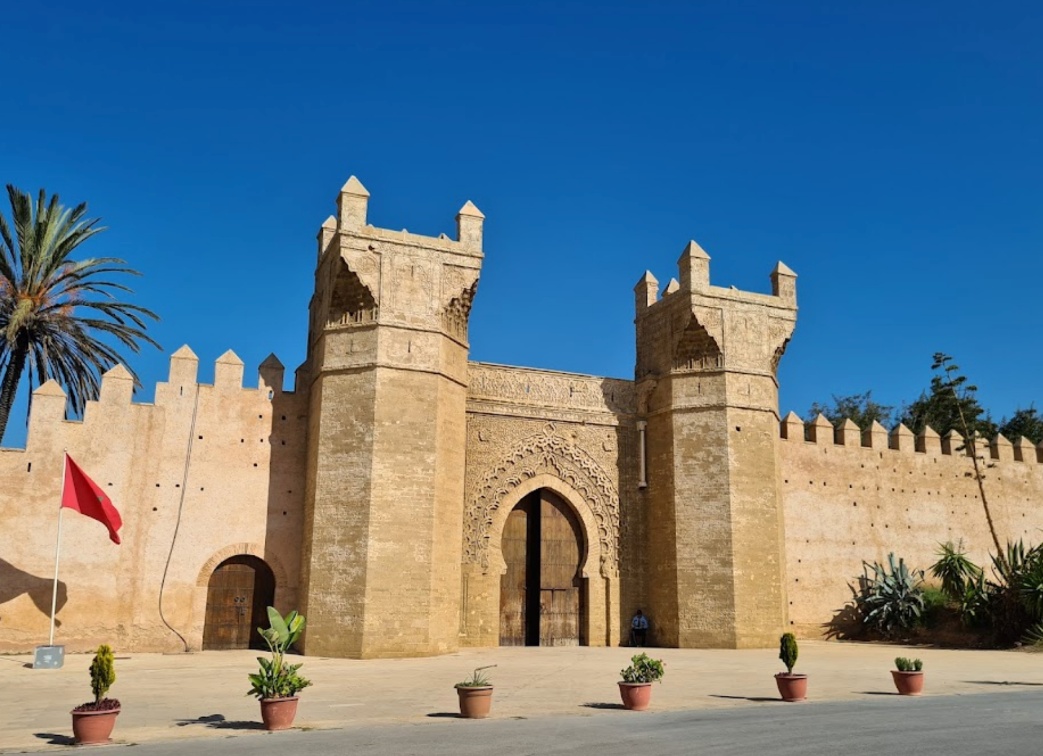Chellah Rabat: A Journey Through Time
Table of Contents
Introduction to Chellah
Nestled on the outskirts of Rabat, the ancient ruins of Chellah offer a fascinating glimpse into Morocco’s rich history. This archaeological site, once a thriving Roman city known as Sala Colonia, later transformed into a necropolis during the Marinid period. Today, Chellah stands as a serene sanctuary, blending historical significance with natural beauty, making it a must-visit destination for history enthusiasts and travelers alike.
Historical Context
Chellah’s origins date back to the Roman Empire when it served as the city of Sala Colonia around the 1st century AD. The Romans established a bustling settlement here, characterized by impressive structures, including baths, temples, and a forum. Following the decline of Roman rule, the site fell into disrepair until the Marinid dynasty repurposed it in the 13th century as a burial ground. The transformation of Chellah into a necropolis signifies its enduring cultural relevance, linking ancient and medieval histories.
Architectural Features
Structure and Design
Chellah is renowned for its blend of Roman and Islamic architectural styles, showcasing the historical evolution of the site. The entrance is marked by a grand gate adorned with intricate tilework, leading visitors into a world where time seems to stand still. The remnants of Roman walls and structures, including columns and mosaics, offer insight into the grandeur of Sala Colonia.
The Marinid period left its mark on Chellah as well, with the construction of tombs and a mosque that reflect Islamic architectural principles. The minaret of the mosque rises above the ruins, providing a stunning contrast to the ancient Roman stones.
Interior and Surroundings
As visitors wander through Chellah, they encounter a harmonious blend of history and nature. The site is enveloped by lush gardens and wildflowers, providing a tranquil atmosphere. The ruins are interspersed with the remnants of ancient architecture, creating a picturesque setting that invites exploration. Birds and small animals thrive here, adding to the serene environment.
Cultural and Spiritual Significance
A Symbol of Heritage
Chellah is not merely an archaeological site; it embodies the spirit of Morocco’s rich heritage. The blending of Roman and Islamic influences signifies the country’s cultural diversity and historical layers. The site serves as a reminder of the interconnectedness of different civilizations that have shaped Morocco’s identity over the centuries.
The Marinid necropolis is also a site of spiritual significance, as it houses the tombs of revered figures, reflecting the Islamic tradition of honoring the deceased. This duality of function—both as a historical site and a place of reverence—makes Chellah a unique landmark.
Visitor Experience
Visitors to Chellah are greeted by the serene beauty of the site, which offers an immersive experience into Morocco’s past. The pathways are well-maintained, allowing for leisurely exploration of the ruins. Informational plaques provide context and insights into the historical significance of various structures, enhancing the visitor experience.
The site is particularly enchanting at sunset, as the warm hues illuminate the ancient stones, creating a magical ambiance. Visitors often take advantage of the peaceful surroundings for photography, meditation, or simply to reflect on the historical narratives that permeate the air.
Preservation Efforts
Recognizing the importance of Chellah, efforts have been made to preserve the site and its integrity. The Moroccan government, along with various cultural organizations, is committed to maintaining the ruins while ensuring that they remain accessible to the public. These preservation initiatives focus on restoring damaged structures, safeguarding the site’s natural beauty, and promoting educational programs that raise awareness about its historical significance.
Conclusion
Chellah is a captivating destination that encapsulates the rich tapestry of Morocco’s history. As a site that reflects both Roman and Islamic influences, it serves as a bridge connecting different eras and cultures. Its stunning architecture, serene gardens, and profound historical significance make it an essential stop for anyone seeking to understand the depths of Morocco’s heritage.
Additional Resources
For those interested in further exploring Rabat’s historical landscape, nearby attractions such as the Mausoleum of Mohammed V and the Kasbah of the Udayas provide additional context and insights into the city’s rich cultural tapestry. Together with Chellah, these landmarks offer a comprehensive journey through Morocco’s past, enriching the visitor’s understanding of the nation’s diverse history.




Kasbah Of The Udayas: A Timeless Gem In Rabat - Private Driver Morocco
[…] historical and cultural offerings, nearby attractions such as the Mausoleum of Mohammed V and the Chellah provide additional insights into the country’s rich heritage. Together with the Kasbah of the […]